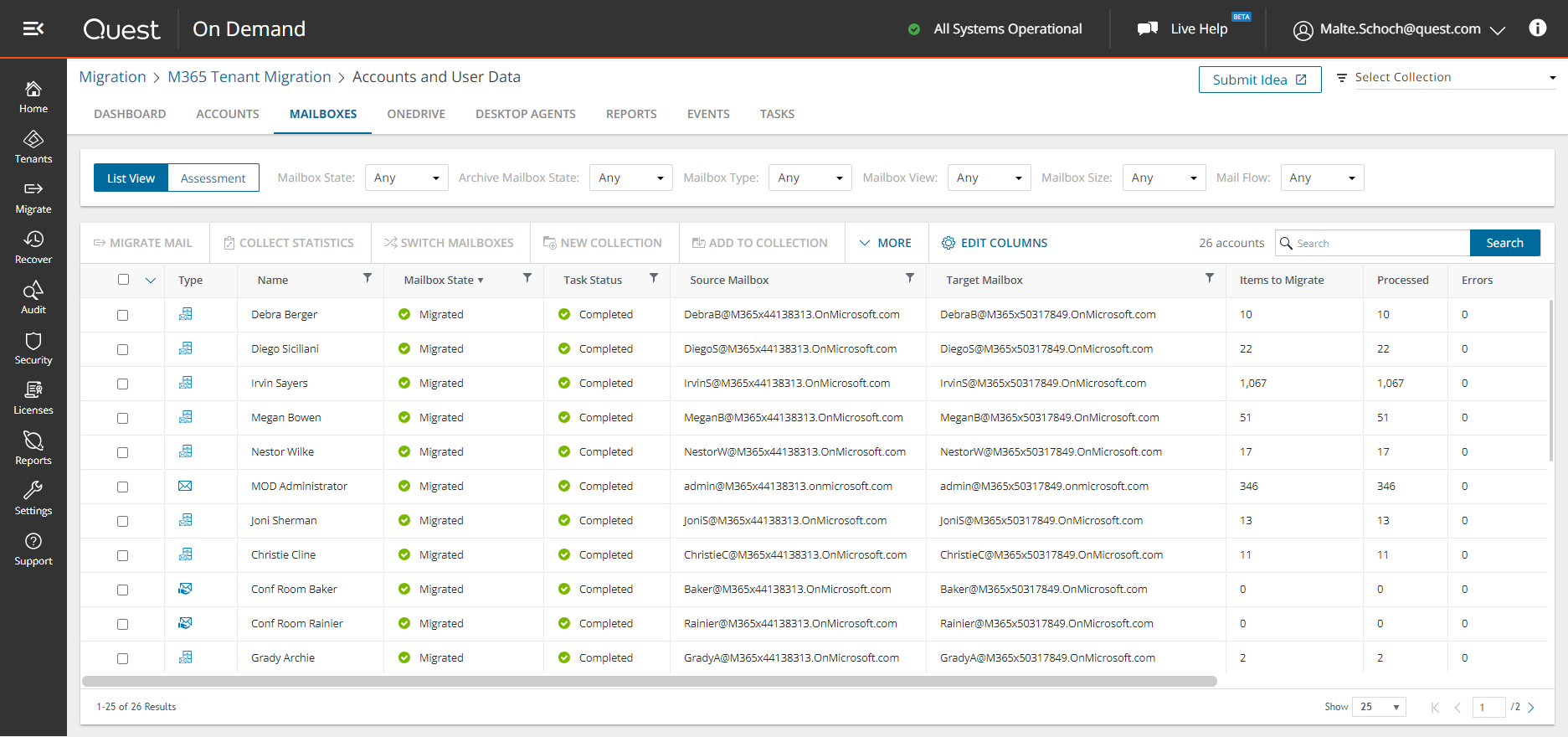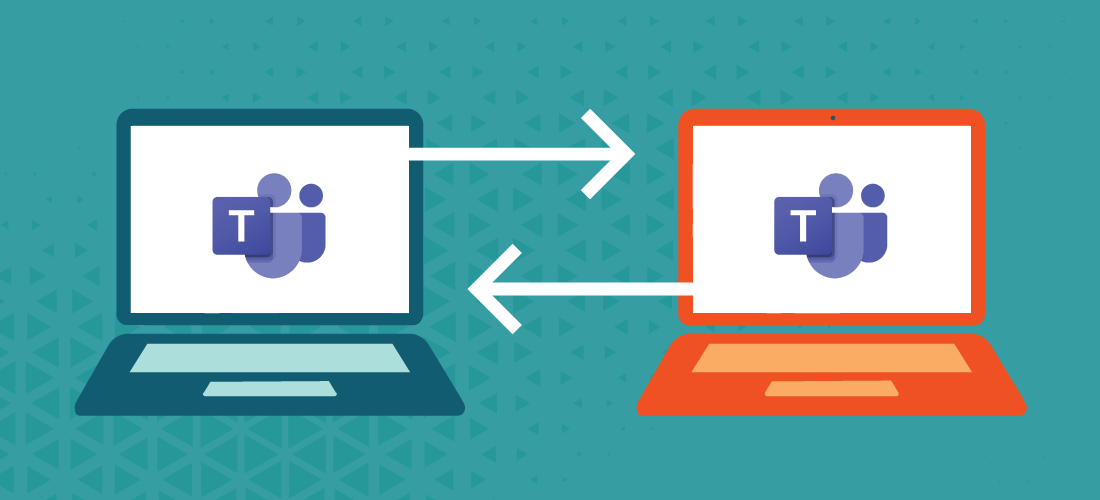
If your organization is looking to migrate from Slack to Teams, be prepared for a few battles along the way. Slack devotees tend to be passionate about their platform, and winning hearts and minds can be a big challenge.
The reasons why organizations end up running both applications can vary, but there are two common themes. The first is when the organization is acquired by a company that has a different strategy. The second is that an organization adopted Slack several years ago when Teams feature parity was quite different.
In the past, the focus was, “Teams can’t do that.” A more common statement nowadays is, “Slack can’t do that.” This shift is persuading dedicated Slack users to reconsider their stance. As a result, organizations are increasingly planning to migrate Slack to Teams.
Quest went through its own project in 2020 to migrate from Slack to Teams. I recently sat down with Chris DeBiase, Quest Software’s Chief Operations Officer, to get his take on these complex projects. Chris has personally driven Slack to Teams migration strategies at several organizations and was one of the champions of Quest’s consolidation.
At the end of this article, you can learn more about our Slack to Teams Preview Program!
What are the main drivers for wanting to migrate from Slack to Teams?
Chris DeBiase: Personally, I have been a part of three Slack to Teams/Skype for Business migrations. They all had five similar drivers for transformation.
1. Ubiquity
There are two applications on every computer at Quest: Antivirus and Office. I don’t see anyone collaborating with our antivirus software. For collaboration to work in an organization, everyone needs to be on it. Having silos of users on different applications doesn’t allow an organization to work effectively. There needs to be one central hub, and Microsoft Teams has become that hub. Adding additional chat and collaboration tools breaks this and creates barriers.
2. Integrations
Many of us think of integrations as integrating applications into Slack. These can be custom connectors or stock applications.
What we lose track of is the extreme integration of the entire Office stack into Teams. The work lifecycle for most organizations is in Office. Microsoft Teams integrates into these aspects, and in turn, facilitates cross-department collaboration. Slack has lots of integrations, but they tend to be relatively niche and have not expanded as rapidly as Teams-deep integration into Office 365. These little items add up throughout the day to highlight the ease of collaborating in Teams vs. Slack in the workplace. Employees need to be able to work and collaborate easily. Teams is the central working hub for most companies and is the driver for this centralization.
3. Video
Video calling has been used globally at Quest for quite some time. However, like most organizations, its use became everyday in the COVID-19 pandemic. The quality and ease of Slack video options just doesn’t come close to the current Teams offerings. (Note: Chris lives in Colorado, I live in London, but we are face-to-face on Teams for this interview.) Teams had significant video enhancements, making the gap between the products large, with Teams being drastically better. These enhancements have made Teams the standard. This standard goes beyond the walls of Quest. It seems that nearly every client we work with is on Teams. External conferences and interactions used to be facilitated on a variety of platforms, but with Teams now being the standard, nearly all business happens via the platform, which is another big reason to migrate from Slack to Teams.
4. Events
Just as we saw with the expansion of video features, the events features in Teams have been a huge deal for us at Quest. The ability to do internal and external webinars in the same application has just made this easy. The feature set in these events continues to expand drastically. As the pandemic went on, we needed to be able to maintain highly interactive meetings. There is no better example than our “Sales Kick-off” events. These used to be in-person and were the main driver of collaboration across our organization. This year, we made an incredible effort to keep these meetings engaging after almost an entire year of being remote. The new event features allowed us to keep engagement high, all within our existing Office 365 investment.
5. Costs
Costs alone will not make this project happen, but it certainly comes into play. The cost of Slack has increased over the years. What used to be a tiny spend item is now an entire line item in many budgets for organizations. For organizations with Office 365, it will become harder and harder to ignore that the company is paying for two solutions that do similar work.
One of the most significant issues with these projects is the cultural change aspect. Slack users tend to be very passionate about the platform. What is your advice to overcome these challenges?
Chris DeBiase: For organizations with both Teams and Slack, this can be difficult at first. Years ago, there was a genuine difference between Slack and Teams. Although Slack users have hung onto this, many are not aware of how far Teams has come. These feelings can create resistance against a Slack to Teams migration project. In companies with split collaboration tools, it always seems that the cool kids are using Slack and the rest of the organization is on Teams. The cool kids do not want to give up this status! I have found in all of these projects that the obstacles are challenging but can be overcome!
My latest advice is that it will not be the battle it used to be to migrate from Slack to Teams. The extreme integration into Office 365 and collaborating with everyone else in the company will help ease the project. In essence, you can let Teams speak for itself, while setting a clear direction that the migration will occur.
In an organization with both Slack and Teams, you will find that almost all Slack users have Teams. You can run some simple reports to discover this. (Note: you can find a guide for running Slack Usage reports here). Once you set a clear direction and timeline, you will slowly discover more and more users will adapt and enjoy their new experience.

One solution. Many workloads.
The real decision you need to make is between doing a hard cutover or allowing dual tools. For most companies, this will depend on the data in Slack. Most companies will find they need to migrate content into Teams, but the custom integrations and applications will often need to be recreated. Running both tools at the same time can help, but don’t have this go on for too long, or people will get frustrated moving back and forth.
You mentioned costs as the final factor. When does this have a larger impact?
Chris DeBiase: Frankly, it can be used to solve other issues. Slack comes out of the SG&A budget. When you look at Office 365 spend with Slack, you can remove Slack and shift these funds. You can get rid of Slack, but you cannot get rid of Office 365! People who have resistance to making this decision should be reminded that they can hire more staff or use the funds in other ways. As we all deal with COVID and post-COVID budgets, this can be a way to gain momentum in the organization. Do you want developers or Slack? Do you want raises or Slack? To some companies, this may sound melodramatic, but to others, these savings can fund more meaningful aspects of the business.
How far in advance from your Slack renewal should you start a project like this?
Chris DeBiase: The project is going to take time to get buy-in. If you wait till renewal time, you might miss the opportunity. In my opinion, you need to start this migration process six months before your renewal. This lead time will allow you to get the organization on board, make a plan, communicate, and make the change.
You have done three Slack to Teams migration projects now. What would you do differently next time?
Chris DeBiase: I would do the project faster. Once the decision to migrate from Slack to Teams has been made and you communicate all the upsides, it is best to just get going. Running two tools can be very confusing. Users are constantly unsure of where to communicate, and things will get lost in the confusion. It is best to declare a migration date and only allow limited access back to the Slack environment in the meantime.



